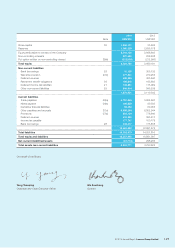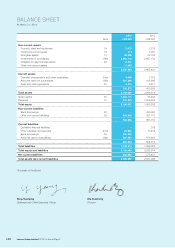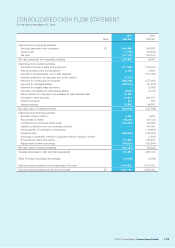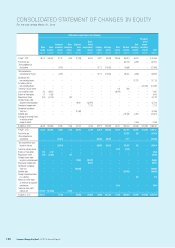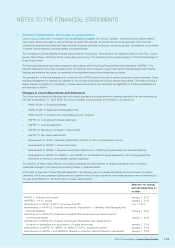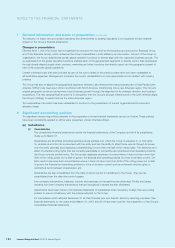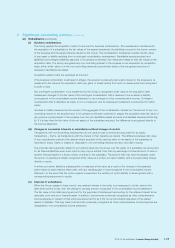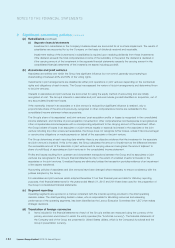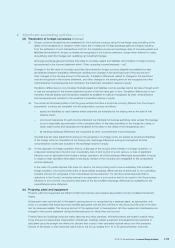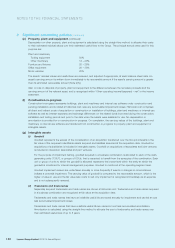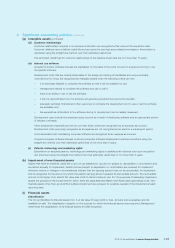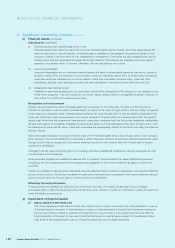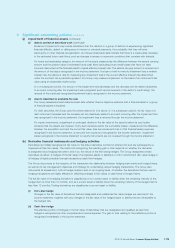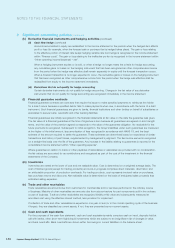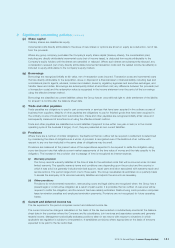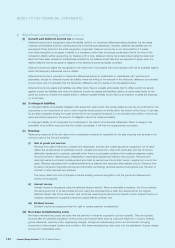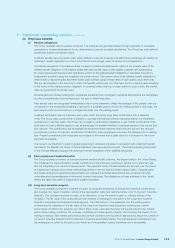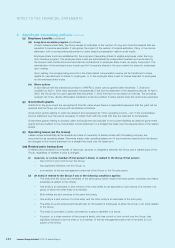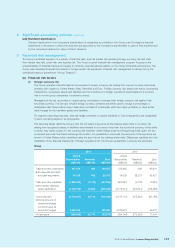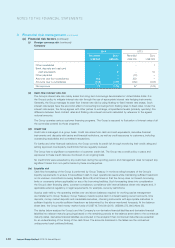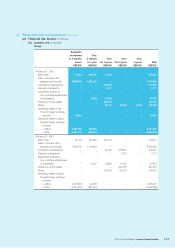Lenovo 2014 Annual Report Download - page 139
Download and view the complete annual report
Please find page 139 of the 2014 Lenovo annual report below. You can navigate through the pages in the report by either clicking on the pages listed below, or by using the keyword search tool below to find specific information within the annual report.
137
2013/14 Annual Report Lenovo Group Limited
2 Significant accounting policies (continued)
(g) Intangible assets (continued)
(iii) Customer relationships
Customer relationships acquired in a business combination are recognized at fair value at the acquisition date.
Customer relations have a definite useful life and are carried at cost less accumulated amortization. Amortization is
calculated using the straight-line method over their estimated useful lives.
The estimated useful lives for customer relationships at the balance sheet date are not more than 15 years.
(iv) Internal use software
Acquired computer software licenses are capitalized on the basis of the costs incurred to acquire and bring to use
the specific software.
Development costs that are directly attributable to the design and testing of identifiable and unique software
controlled by the Group are recognized as intangible assets when the following criteria are met:
– it is technically feasible to complete the software so that it will be available for use;
– management intends to complete the software and use or sell it;
– there is an ability to use or sell the software;
– it can be demonstrated how the software will generate probable future economic benefits;
– adequate technical, financial and other resources to complete the development and to use or sell the software
are available; and
– the expenditure attributable to the software during its development can be reliably measured.
Development costs include the employee costs incurred as a result of developing software and an appropriate portion
of relevant overheads.
Other development expenditures that do not meet these criteria are recognized as an expense as incurred.
Development costs previously recognized as an expense are not recognized as an asset in a subsequent period.
Costs associated with maintaining computer software are recognized as an expense as incurred.
Acquired computer software licenses costs and computer software development costs are amortized using the
straight-line method over their estimated useful lives of not more than 5 years.
(v) Patents, technology and marketing rights
Expenditure on acquired patents, technology and marketing rights is capitalized at historical cost upon acquisition
and amortized using the straight-line method over their estimated useful lives of not more than 5 years.
(h) Impairment of non-financial assets
Assets that have an indefinite useful life or are not yet available for use are not subject to depreciation or amortization and
are tested annually for impairment. Assets that are subject to depreciation or amortization are reviewed for impairment
whenever events or changes in circumstances indicate that the carrying amount may not be recoverable. An impairment
loss is recognized for the amount by which the asset’s carrying amount exceeds its recoverable amount. The recoverable
amount is the higher of an asset’s fair value less costs to sell and value in use. For the purposes of assessing impairment,
assets are grouped at the lowest level for which there are separately identifiable cash flows (cash-generating units). Non-
financial assets other than goodwill that suffered impairment are reviewed for possible reversal of the impairment at each
reporting date.
(i) Financial assets
Classification
The Group classifies its financial assets into: (i) at fair value through profit or loss, (ii) loans and receivables; and (iii)
available-for-sale. The classification depends on the purpose for which the financial assets were acquired. Management
determines the classification of its financial assets at initial recognition.


